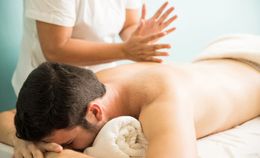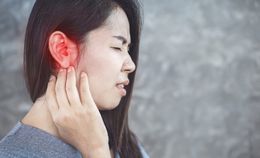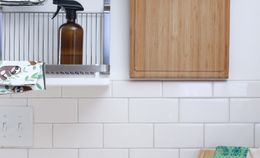Depression and the associated symptoms can be challenging to manage. Medications have their own side effects. To find relief from depression naturally and holistically, Craniosacral Therapy can be a great option to consider.
In this article, we are going to take a look at how Craniosacral Therapy can work for depression, how effective it can be, how many sessions may be needed, and what to expect when it comes to cost.
Craniosacral Therapy for Depression
Depression is a serious mental health condition with often severe symptoms being experienced including intense sadness, fatigue and a loss of interest in life. According to the World Health Organization (WHO), there are 300 million people around the world who suffer from depression. While medication can help, alternate methods can play a vital role when it comes to recovery. Stress management, psychotherapy and healing treatments such as Craniosacral Therapy (CST) may also provide relief.
Depression is a biological, neurochemical disorder where the brain cannot regulate mood. If there is too much internal or external stress, the body's self-regulation fails, the tissues of the body tighten, and this affects both the spinal cord and the brain. As a result, the function of the central nervous system (CNS) and the sympathetic nervous system (SNS) can be impacted with a direct role in the physical response to stress.
Does Craniosacral Therapy Work for Depression?
When the body relaxes and the brain slows down during treatment, stored emotions may surface for healing. CST can have a positive effect on the regulation of mood, reducing stress and inducing deep relaxation. While the individual focuses on their breathing exercises to enhance relaxation, the therapist increases the activity of the parasympathetic nervous system (PNS).
As the PNS coordinates with the sympathetic nervous system (SNS), it triggers the body to secrete hormones, such as serotonin, which flood the body and brain with increased calmness and wellbeing. Heart rate and blood pressure decrease as a combination of "feel-good" hormones, coupled with mindfulness and deep breathing techniques, help induce relaxation. In a comfortable environment where there is a peaceful ambiance, CST can help in providing pain relief along with decreasing symptoms of depression.
Is Craniosacral Therapy an Effective Option for Depression?
Craniosacral Therapists believe that emotional pain is often held in the body in the form of tension, and this emotional pain can lead to feelings of anxiety or depression. Regular sessions may help release tension. Through the therapeutic treatment of the sacrum, sphenoid, and occipital bones which form the cranial base, mood disorders have been shown to improve. It is possible that any increased pressure and tightness placed upon nerves and connective tissues due to facial tissue restrictions may lead to abnormal motion of the cerebrospinal fluid. As a result, it is possible that chronic pain, inflammation, and inflexibility could manifest.
Craniosacral Therapy helps with the maintenance of health and can prevent problems related to the central nervous system from developing. By finding specific pressure points of tension and utilizing gentle manipulation, tension and pain are alleviated. This, in turn, decreases those symptoms associated with anxiety or depression.
What Do Research and Case Studies Show?
Chronic pain and depression may be interlinked. According to one study, published in *Evidence-Based Complementary and Alternative Medicine in 2011, those people with fibromyalgia experienced less depression and improved quality of life following Craniosacral Therapy treatments. There was a reduction in the perception of pain and fatigue experienced, Sleep at night improved along with mood. Overall, anxiety levels decreased which resulted in an improved depressive state.
How many Sessions are Recommended for Depression?
When it comes to depression, individuals usually need several sessions of approximately 45-60 minutes - sometimes, longer.
The average recommended a number of sessions is 3-10. For example, in one case study involving the use of Craniosacral Therapy for depression, 16 sessions were found most effective.
As a result, the length and number of the sessions required will vary depending on each individual's needs. The results of a single session may also vary with some experiencing an increase of energy, while others feel the need for deep sleep.
What Will Craniosacral Therapy for Depression Cost?
The average price per session in the United States is $70-$170. This is taking into account most major cities throughout the nation.
If you find that the average three-to-ten sessions end up serving your needs for managing your levels of pain, you can expect to pay $700 on the low end and $1,700 on the high end. Don't forget to ask your practitioner about any packages or specials he/she might be offering.
For more information, read: How Much Does Craniosacral Therapy Cost?
Craniosacral Therapy Near Me
Pain and depression can create a vicious cycle where each one fuels the other. Many unexpected physical symptoms can manifest as an indicator of depression including headaches or backache.
Craniosacral Therapists work with the body's rhythm to promote a healing flow of blood. This releases trapped traumas on a psychological, emotional or physical level which, in turn, leads to a reduced feeling of depression.
There is still an ongoing debate as to how CST works, but as an unbalanced nervous system is interconnected to feelings of anxiety or depression, gentle manipulation of the body can invite harmony and balance back to the nervous system providing much-needed relief.
Would you like to give Craniosacral Therapy a try to manage/ treat depression and to experience some relief from your symptoms?
References:
Depression. (n.d.). Retrieved April 25, 2019, from https://www.who.int/news-room/fact-sheets/detail/depression
Depression and CranioSacral Therapy. Retrieved April 19, 2019, from https://www.iahe.com/docs/articles/Depression_and_CranioSacral_Therapy_-_Lee.pdf
Guillermo A. Mataran-Penarrocha, Adelaida Maria Castro-Sanchez, Gloria Carballo Garcia, Carmen Moreno-Lorenzo, Tesifon Parron Carreno, Maria Dolores Onieva Zafra (2011). Influence of Craniosacral Therapy on Anxiety, Depression, and Quality of Life in Patients with Fibromyalgia. Evidence-Based Complementary and Alternative Medicine, 2011 (178769), 1-9. doi:10.1093/ecam/nep125. Retrieved April 19, 2019, from https://www.ncbi.nlm.nih.gov/pmc/articles/PMC3135864/





















